Type Ii Secretion System
Type ii secretion system. Type II secretion is composed of four main components. Secretins of type II secretion systems and type IV pili. PulA secretion is a two-step process where the protein is first exported into the periplasmic space via the SecB- dependent pathway and subsequently transported across the outer membrane by a dedicated secretion apparatus composed of 1216 proteins called the secreton.
Type II secretion system T2SS in which substrates are transported through the inner membrane via the Sec or Tat pathways. GspC-O the type II secretion or secreton complex in Escherichia coli has also been known as the general secretory pathway GSP for the export of proteins across the outer membranes of gram-negative bacteria. Historically the T2SS was discovered to rely on the Sec pathway hence the name general.
Type II secretion systems T2SS allow Gram-negative bacteria to transport toxins and enzymes from the periplasm to the external milieu and are thus important for the pathogenicity of bacteria. The type II secretion system is one of six protein secretory systems that are commonly found in gram negative bacteria along with the type I secretion system the type III secretion system The type IV secretion system the chaperoneusher pathway the autotransporter pathwaytype V secretion system and the type VI secretion system some bacteria. However many more systems utilize the Sec pathway and the term Gsp is considered less accurate by some authors.
Enteropathogenic Escherichia coli EPEC is a major cause of diarrhea in infants in developing countries. The type II secretion system T2SS is a double-membrane-spanning protein secretion system composed of 1215 different general secretory pathway Gsp proteins that are present in. We have identified a functional type II secretion system T2SS in EPEC that is homologous to the pathway responsible for the secretion of heat-labile enterotoxin by enterotoxigenic E.
The system activates as a. To drive secretion T2SS assemble filaments called. The type II secretion system T2SS is one of several extracellular secretion systems in gram-negative bacteria.
Type I secretion system T1SS or TOSS is found in Gram-negative bacteria. Its contribution to survival of both extracellular and intracellular pathogens a. After Sec- or Tat-dependent transport of secretion substrates from the bacterial cytosol to the periplasm the type II secretion system transfers proteins across a multimeric pore complex the secretin to the extracellular milieu.
However many other systems also use the Sec pathway so the term general secretory pathway is. While highly prevalent in γ and βproteobacteria the T2SS is also recognized to lesser extent in members of the δ and α classes 1 2.
Its contribution to survival of both extracellular and intracellular pathogens a.
GspC-O the type II secretion or secreton complex in Escherichia coli has also been known as the general secretory pathway GSP for the export of proteins across the outer membranes of gram-negative bacteria. We found that the secretin GspD of the type II secretion system T2S of Leptospira interrogans serovar Canicola was highly conserved amongst pathogenic serovars and was expressed in vivo during infection as shown by immunohistochemistry. Bacterial type II secretion systems T2SSs translocate virulence factors toxins and enzymes across the cell outer membrane. Secretins of type II secretion systems and type IV pili. Gram-negative bacteria use the type II secretion system to transport a large number of secreted proteins from the periplasmic space into the extracellular environment. The type II secretion system T2SS is a double-membrane-spanning protein secretion system composed of 1215 different general secretory pathway Gsp proteins that are present in. While highly prevalent in γ and βproteobacteria the T2SS is also recognized to lesser extent in members of the δ and α classes 1 2. PulA secretion is a two-step process where the protein is first exported into the periplasmic space via the SecB- dependent pathway and subsequently transported across the outer membrane by a dedicated secretion apparatus composed of 1216 proteins called the secreton. After Sec- or Tat-dependent transport of secretion substrates from the bacterial cytosol to the periplasm the type II secretion system transfers proteins across a multimeric pore complex the secretin to the extracellular milieu.
Type I secretion system T1SS or TOSS is found in Gram-negative bacteria. Such a pore complex is also present in type IV pili. Type II secretion system T2SS in which substrates are transported through the inner membrane via the Sec or Tat pathways. Historically the T2SS was discovered to rely on the Sec pathway hence the name general. After Sec- or Tat-dependent transport of secretion substrates from the bacterial cytosol to the periplasm the type II secretion system transfers proteins across a multimeric pore complex the secretin to the extracellular milieu. We have identified a functional type II secretion system T2SS in EPEC that is homologous to the pathway responsible for the secretion of heat-labile enterotoxin by enterotoxigenic E. However many other systems also use the Sec pathway so the term general secretory pathway is.

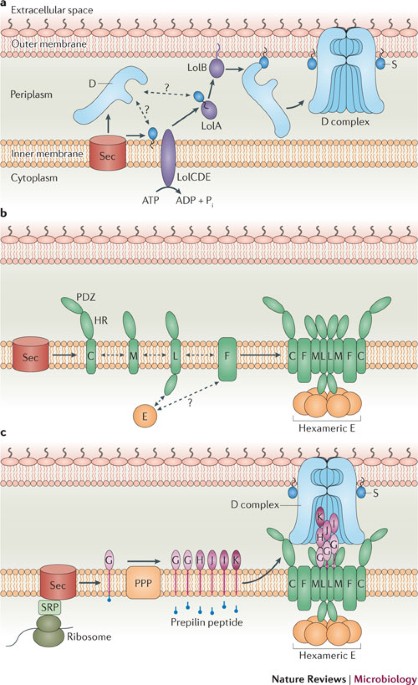



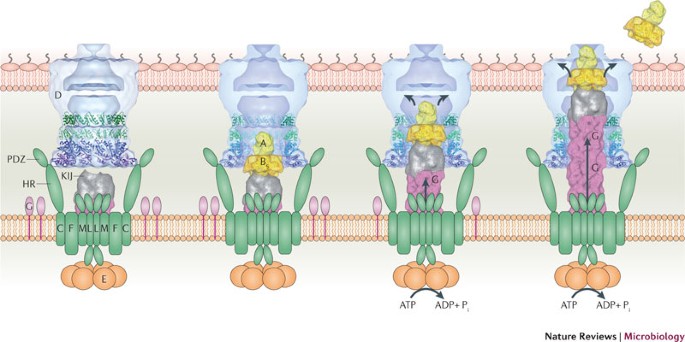
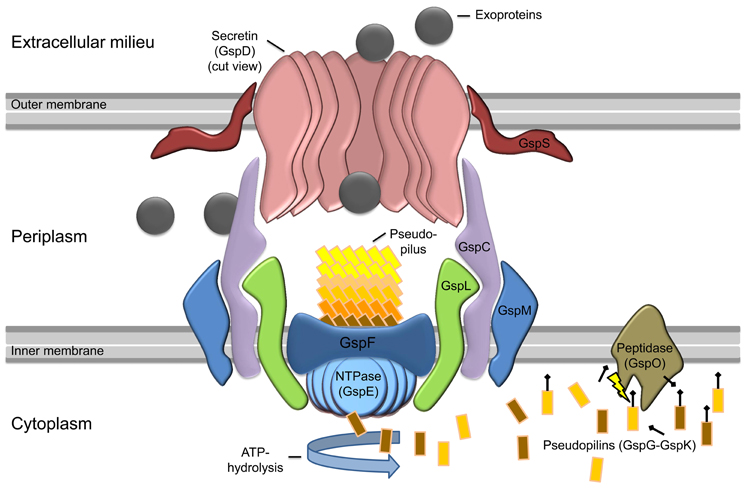
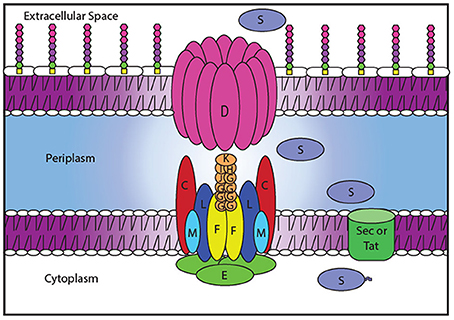



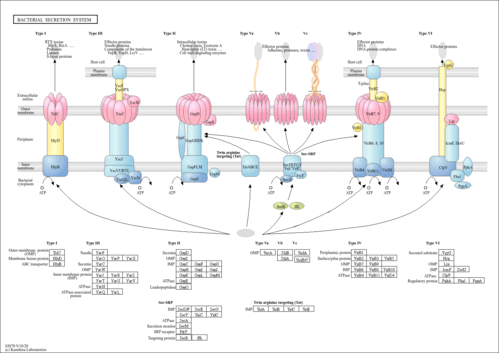









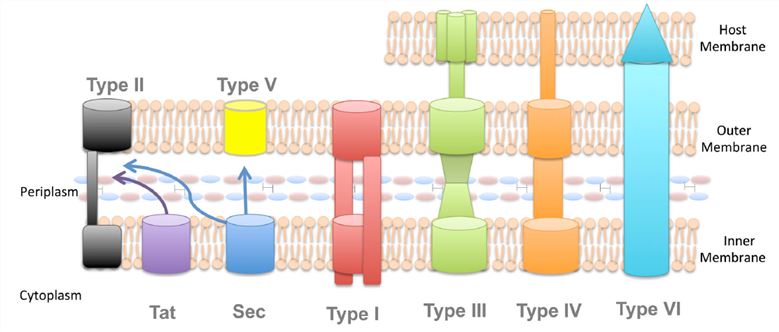

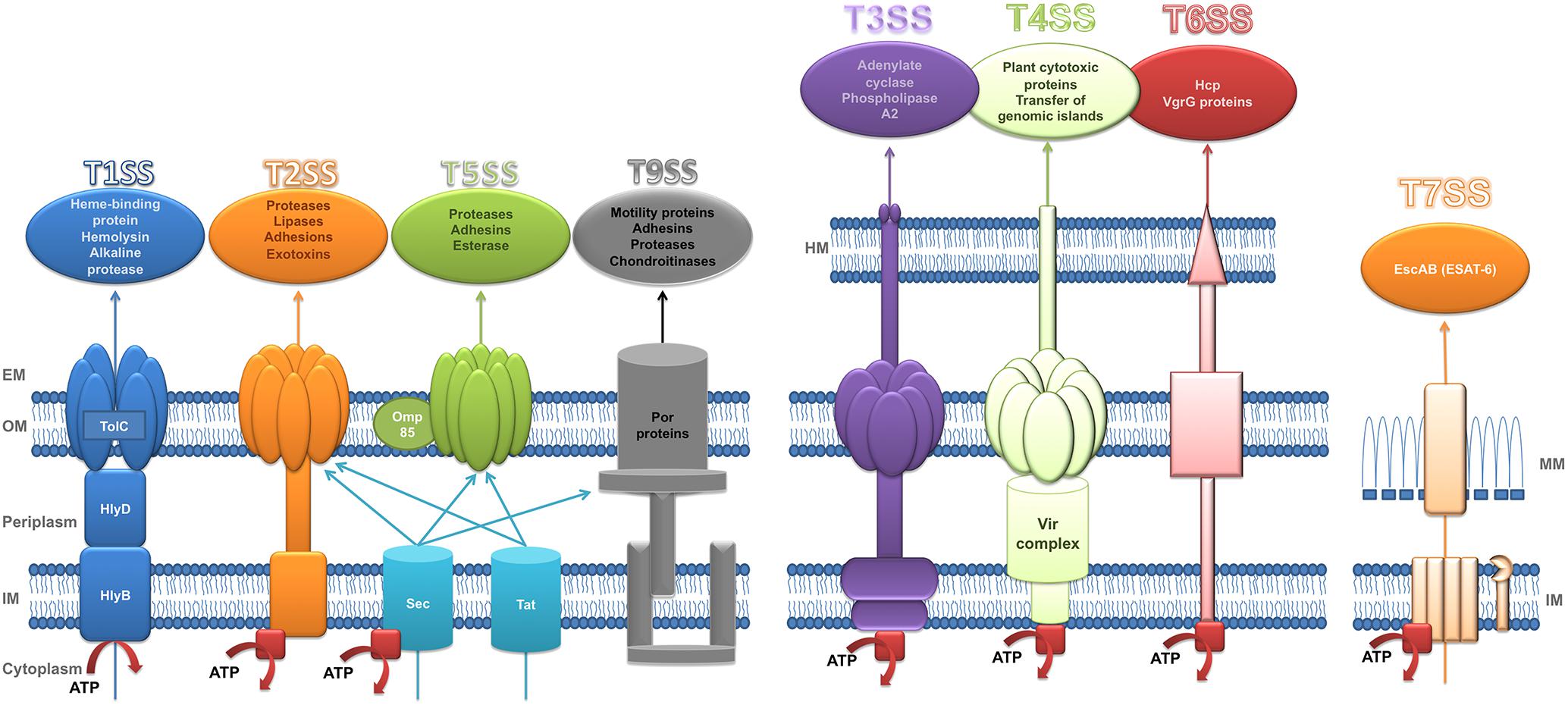
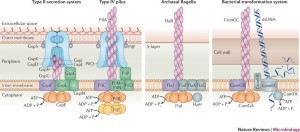





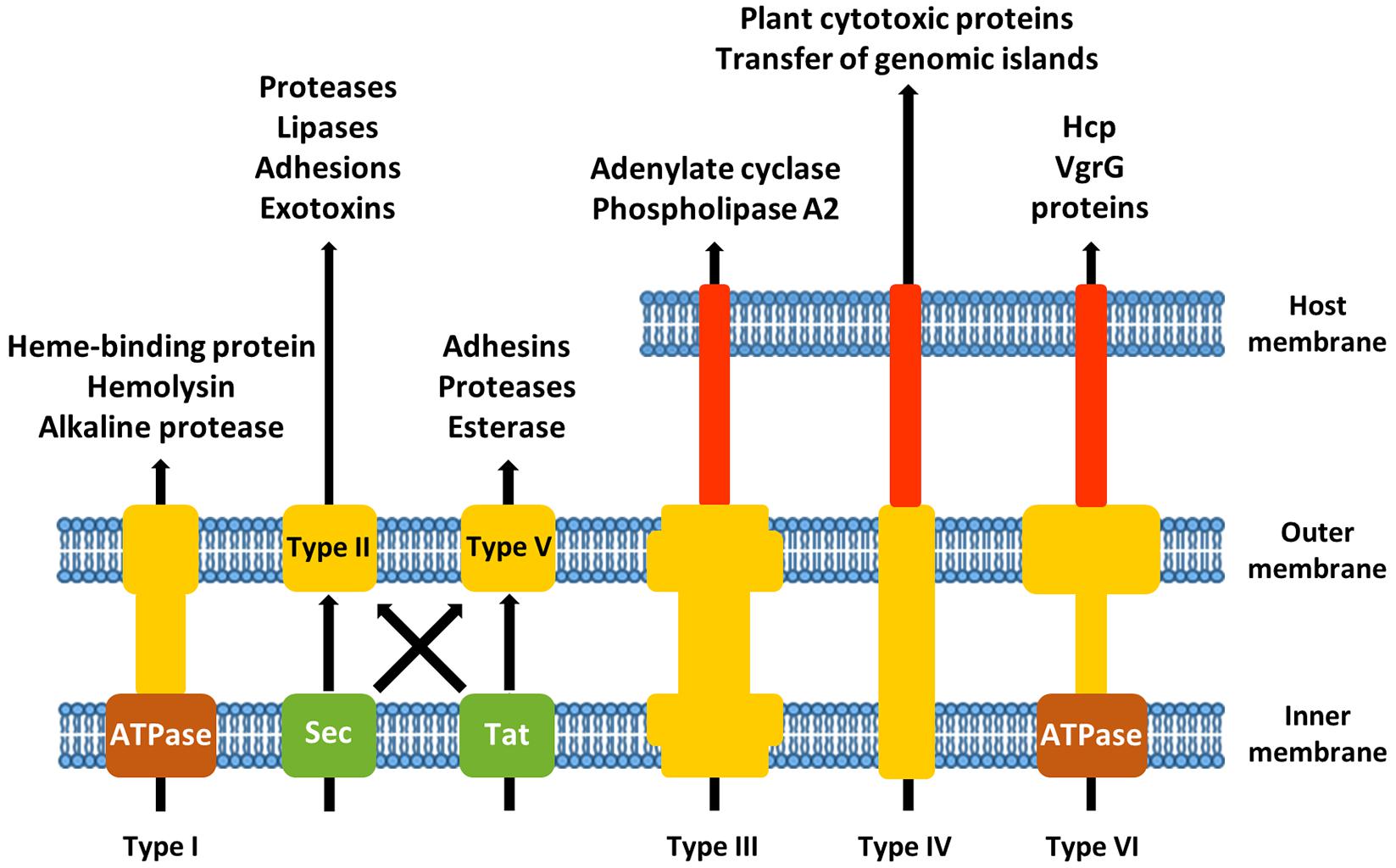





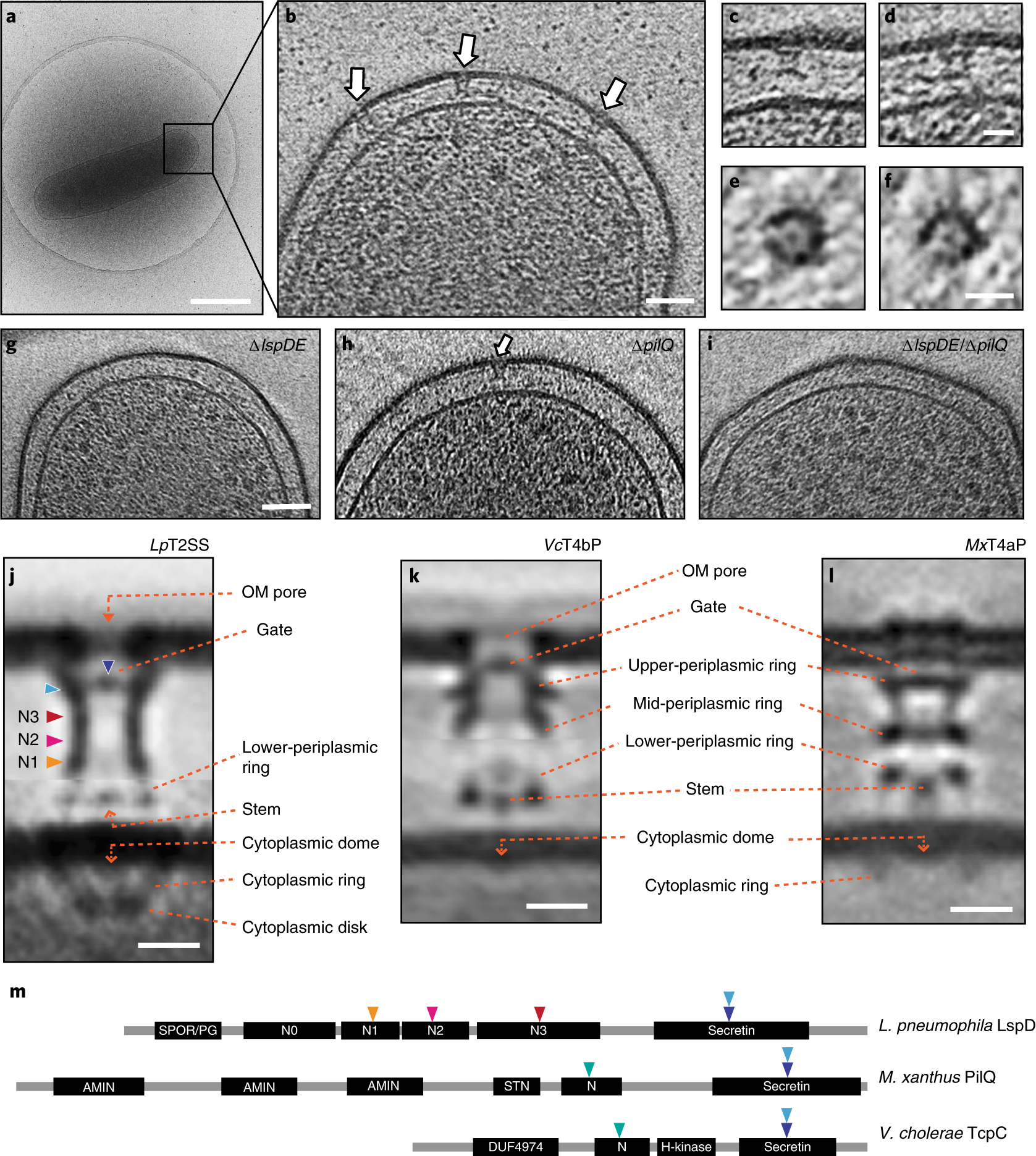






Post a Comment for "Type Ii Secretion System"